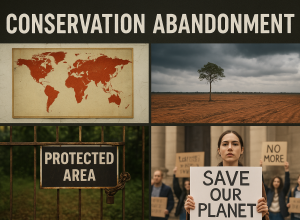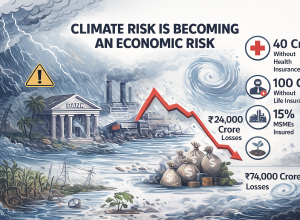The global construction industry, which can be argued is one of the most critical sectors for the global economy, is now confronted with the reality of factors to its carbon footprint. With approximately 40% per cent of the world’s energy consumption as well as 33% of the world’s population’s greenhouse gases and, accompanied by several changes in the exhaust of resources, the industry has to shift to sustainable practices. At the core of this change is green building supply chain with sustainable building materials, energy-neutral building designs, and tightly controlled levels of green certification. This not only decreases the environmental footprints but is also economically reasonable in the long run while addressing the customer’s need for green buildings.
The global green building materials market was valued at $238 billion in 2021 and is projected to reach $629 billion by 2030, growing at a CAGR of 11.8%. This growth reflects increasing demand for sustainable construction practices.
Some of the traditional construction elements of making buildings including concrete, steel and glass, etc, have their fair share of issues and pollution. Cement industry for instance is responsible for about 8% of the world’s carbon dioxide emissions which is more than the total GHG emission of most countries. In this respect, the focus of the green building movement is on sustainable building materials that can be restored, transformed, and used in the area.
Modern consumers are increasingly considering eco-friendly standards, after all, 77% of homebuyers prefer eco-conscious installations as part of their properties. In this regard, green building practices should be widely availed by these developers because they can earn their higher property valuations in this growing market.
New materials are appearing on the market which can be used instead of conventional construction materials. Bamboo is the most popular for its fast growth and high tensile strength and thus recommended for both structural and decorative use.
Rammed earth construction – a method that has been in use since ancient times – is coming into its own because the structure is strong and has a low environmental carrying capacity.
Cross laminated timber (CLT) is a form of mass timber product and has been cited to offer similar structural strength to steel but with much lower carbon emission. A study conducted in 2021 showed that the use of CLT in place of traditional materials could make a building produce as much as 60% green house gas emissions.
Recycled materials help in reducing the amount of waste that needs to be disposed of and also reduce the rate at which we consume raw materials. Recycled steel only needs 25% of the energy that is needed for the production of virgin steel and this reduces the need for mining.
Concrete alternatives such as ferrock, a material produced from recycled steel dust and fly ash concrete try to reduce the amount of industrial wastes that are sent to landfills and emitted as greenhouse gases.
Plastics are being transformed into durable bricks and panels and some of the companies leading in this sector include Gjenge Makers in Kenya which produces construction materials that are five times stronger than concrete from plastic waste.
There are many factors which may be daunting when considering the employment of sustainable materials, for example, the high costs attached and stakeholders who are not inclined to change their ingrained methods. According to industry watchers and experts, the construction industry is still evolving when it comes to deployment of green buildings techniques as most construction professionals lack the skills. They should focus on educational and certification programmes globally in order to make a change by adopting the methods.
The global nature of the construction supply chain complicates the traceability of materials. Blockchain technology is emerging as a solution, providing transparency and ensuring that materials meet sustainability standards.
Despite challenges, the opportunities within the green building supply chain are vast.
Thankfully, with advancement in production technology, new methods are appearing that will reduce costs in due time. Buildings account for a sizable share in fuel consumption globally, the main three being heating, cooling and lighting. The operational energy use can greatly be reduced through energy efficient designs, which can cut down 28% of the emissions generated by the global building sector.
Elements such as Sunlight or thermal mass can be utilised to improve energy optimisation which is the basis of passive design. The benefits of Green buildings are not limited to the construction phase but they keep on accruing across their lifetime.
Large windows along with light shelves are an effective means to facilitate natural lighting and brighten up the interiors, which has proven to reduce energy use by 20% to 60%.
Another useful method to combat high urban temperatures is to introduce green roofs and walls as they can effectively reduce indoor temperatures, the use of such techniques during research carried out in Singapore decreased building temperatures by 4–5’C and the cooling energy cost was cut by 25%.
To save up $19,000 over a span of 30 years, one can employ solar panels on a net-zero energy which at current times only costed a Net-zero energy with panels $19,000 will aid in cutting heating costs significantly which are not competitive to that.
By employing Geothermal systems, hot and cold air can be efficiently obtained from the underground layers of earth, further curtailing energy needs achieving near perfection.
The green building supply chain is a pivotal building block in the quest for an eco-friendly world. The construction industry can reduce its negative influence on the environment while generating economic and social value by concentrating on environmentally sustainable components, designs and green certification. The full realization of this movement will require cross-sectional participation of governments and industry and consumer leaders.
The future of construction is building human’s requisites into also looking after the planet. As it increasingly becomes the standard for us to adopt green building methods, we are nearing a reality where the artificial structures we have built will uplift nature instead of deteriorating it.
Green Certifications -- Benchmarks for Sustainability
Green certifications provide a standardized framework for evaluating and rewarding sustainable practices in construction. These certifications not only validate environmental performance but also offer economic and reputational benefits.
LEED (Leadership in Energy and Environmental Design)
LEED, the most widely recognized green building certification, evaluates projects across metrics like energy efficiency, water use, and material selection.
A LEED-certified building can reduce operational costs by 20% and energy use by 30–50% compared to conventional buildings.
As of 2023, there are over 100,000 LEED-certified projects globally, covering 11 billion square feet.
BREEAM (Building Research Establishment Environmental Assessment Method)
Originating in the UK, BREEAM emphasizes holistic sustainability, from material sourcing to occupant health. Certified buildings report up to a 40% reduction in carbon emissions.
WELL Certification
Focusing on health and well-being, WELL-certified buildings prioritize air quality, lighting, and ergonomics. Studies show that WELL-certified workplaces can enhance employee productivity by 8–11% and reduce absenteeism.





